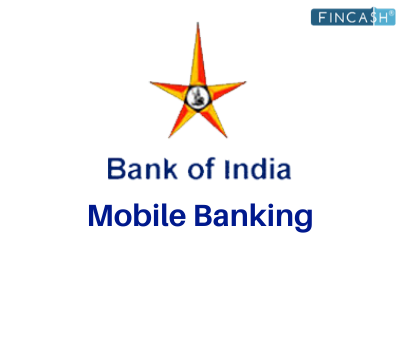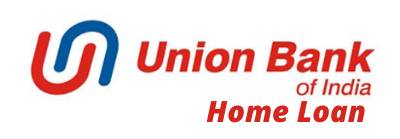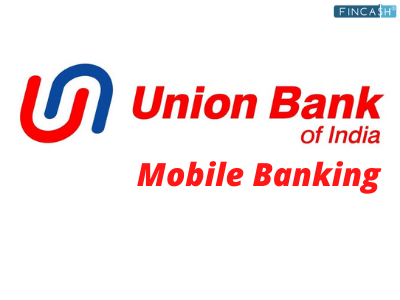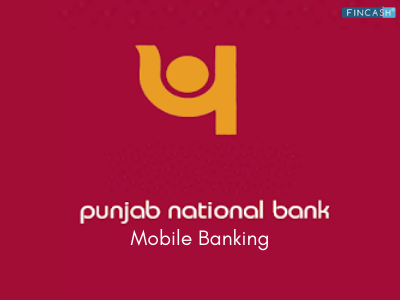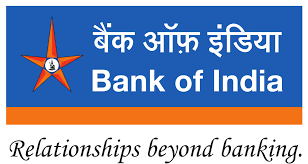
Table of Contents
- Functions of Banks in India
- Types of Bank Accounts in India
- Other Important Banking Concepts
- 🏦 Types of Banks in India (2025 List)
- FAQs on Types of Banks in India
- 1. What is the difference between a scheduled and a non-scheduled bank?
- 2. Which is the central bank of India?
- 3. What are Public Sector Banks in India?
- 4. How are Private Sector Banks different from Public Sector Banks?
- 5. What are Foreign Banks in India?
- 6. What is the role of Regional Rural Banks (RRBs)?
- 7. What is the difference between Payment Banks and Small Finance Banks?
- 8. Are Co-operative Banks regulated by the RBI?
- 9. Which is the largest Public Sector Bank in India?
- 10. Why were Small Finance Banks created?
- Conclusion
Banking in India - A Complete Guide
Banking in India is the backbone of the country’s Financial System, playing a vital role in shaping the Economy. From traditional savings accounts to digital UPI transactions, the Indian banking ecosystem has transformed rapidly, ensuring accessibility, transparency, and inclusiveness. Whether you're an individual, a business owner, or an NRI, understanding the types of banks, their functions, and the Range of banking services in India is crucial for smart money management.
In this comprehensive guide, we’ll explore the functions of Indian banks, types of banks including public sector, private sector, foreign banks, RRBs, and payment banks, as well as various Bank accounts and key banking concepts such as RTGS, UPI, IMPS, and more. Whether you're new to banking or want to deepen your understanding of India's evolving financial landscape, this article will provide everything you need to know.
Functions of Banks in India
Banks in India provide a broad range of services to cater to the diverse financial needs of people and institutions. Some of their major functions include:
Accepting Deposits: Offering a secure place for individuals and businesses to deposit their money.
Lending Money: Providing loans for personal use, businesses, housing, education, and other purposes.
Facilitating Transactions Online & Mobile Banking: Enabling payments and transfers through cheques, debit/credit cards, UPI, NEFT, RTGS, and IMPS.
Foreign Exchange Services: Helping customers buy, sell, or exchange foreign currencies.
Safe Deposit Lockers: Offering secure lockers to store valuables and documents.
Investment Services: Providing products like Mutual Funds, Bonds, and insurance.
Facilitating Transactions Online & Mobile Banking: Enabling anytime access to banking services via the internet and mobile apps.
Talk to our investment specialist
Types of Bank Accounts in India
Banks offer various accounts based on the customer’s needs. Below are the major types:
- Savings Account: For individuals to save money and earn interest.
- Current Account: Primarily for businesses; high transaction limits, no interest.
- Fixed Deposit (FD) Account: Lump sum deposited for a fixed tenure at a higher interest rate.
- Recurring deposit (RD) Account: Monthly deposits for a fixed period, earning interest.
- NRI Accounts:
- NRE (Non-Resident External)
- NRO (Non-Resident Ordinary)
- FCNR (Foreign Currency Non-Resident)
- Senior Citizen Account: With special benefits and higher interest.
- Salary Account: Zero balance account for salaried individuals.
- Demat account: For holding and trading securities in electronic form.
- Joint Account: Operated by two or more individuals jointly.
- Minor Account: Opened by a guardian for a child below 18 years.
- Corporate Account: For companies handling large volumes of transactions.
Other Important Banking Concepts
What is RTGS? Real-time Gross Settlement; high-value transfers processed in Real Time.
What is IMPS? Immediate Payment Service; 24/7 instant fund transfer.
What is a Cheque? A written order to a bank to pay a specified amount to a person.
What is UPI PIN? A 4-6 digit code used to authorise UPI transactions.
What is a Cross Cheque? A cheque with two parallel lines; cannot be encashed directly.
Who is a Nominee in Banking? A person designated to receive the proceeds in case of the account holder’s death.
Bank Timings on Saturdays: Most banks operate from 10 AM to 2 PM on the 1st, 3rd, and 5th Saturdays; closed on the 2nd and 4th.
🏦 Types of Banks in India (2025 List)
India has a diverse banking system regulated by the Reserve Bank of India (RBI). Here's a complete guide to different types of banks in India, their functions, and examples.
1. Central Bank of India
| Bank Type | Name | Function |
|---|---|---|
| Central Bank | Reserve Bank of India (RBI) | Issues currency, regulates banks, manages monetary policy & Inflation |
2. Commercial Banks in India
a) Public Sector Banks
| Bank Name |
|---|
| State Bank of India (SBI) |
| Punjab National Bank (PNB) |
| Bank of Baroda (BOB) |
| Union Bank of India |
| Canara Bank |
| Indian Bank |
| Bank of India |
| UCO Bank |
| Bank of Maharashtra |
| Indian Overseas Bank |
b) Private Sector Banks
| Bank Name |
|---|
| HDFC Bank |
| ICICI Bank |
| Axis Bank |
| Kotak Mahindra Bank |
| IndusInd Bank |
| Federal Bank |
| IDFC FIRST Bank |
| RBL Bank |
| South Indian Bank |
| DCB Bank |
| CSB Bank |
| Karnataka Bank |
| Karur Vysya Bank |
| Tamilnad Mercantile Bank |
| City Union Bank |
c) Foreign Banks in India
| Bank Name |
|---|
| Citibank |
| HSBC |
| Standard Chartered |
| Deutsche Bank |
| DBS Bank |
| Barclays Bank |
| Bank of America |
| JPMorgan Chase |
| Credit Suisse |
| BNP Paribas |
| Bank of Tokyo-Mitsubishi UFJ |
| Société Générale |
| Mizuho Bank |
d) Regional Rural Banks (RRBs)
| Bank Name |
|---|
| Andhra Pradesh Grameena Vikas Bank |
| Kerala Gramin Bank |
| Karnataka Vikas Grameena Bank |
| Uttar Bihar Gramin Bank |
| Baroda UP Bank |
| Maharashtra Gramin Bank |
| Telangana Grameena Bank |
| Aryavart Bank |
3. Co-operative Banks in India
a) State Co-operative Banks
| Bank Name |
|---|
| Maharashtra State Cooperative Bank |
| Gujarat State Cooperative Bank |
| Andhra Pradesh State Cooperative Bank |
b) Urban Co-operative Banks
| Bank Name |
|---|
| Saraswat Co-operative Bank |
| Cosmos Bank |
| Shamrao Vithal Co-operative Bank |
| TJSB Sahakari Bank |
| Punjab and Maharashtra Co-operative Bank |
| Abhyudaya Co-operative Bank |
4. Payment Banks in India
| Bank Name |
|---|
| Airtel Payments Bank |
| Paytm Payments Bank |
| India Post Payments Bank |
| Fino Payments Bank |
| NSDL Payments Bank |
| Jio Payments Bank |
5. Small Finance Banks in India
| Bank Name |
|---|
| AU Small Finance Bank |
| Ujjivan Small Finance Bank |
| Equitas Small Finance Bank |
| Jana Small Finance Bank |
| Suryoday Small Finance Bank |
| Capital Small Finance Bank |
| North East Small Finance Bank |
| ESAF Small Finance Bank |
| Fincare Small Finance Bank |
| Unity Small Finance Bank |
6. Scheduled vs Non-Scheduled Banks
Scheduled Banks
| Scheduled Banks |
|---|
| Listed in Second Schedule of RBI Act |
| Maintain CRR & SLR |
| Minimum capital ₹5 lakh |
| Includes: SBI, HDFC, ICICI, AU Small Finance Bank, etc. |
Non-Scheduled Banks
| Non-Scheduled Banks |
|---|
| Not in Second Schedule |
| Smaller banks with limited operations |
FAQs on Types of Banks in India
1. What is the difference between a scheduled and a non-scheduled bank?
A: Scheduled banks are listed in the Second Schedule of the RBI Act, 1934 and follow RBI norms like maintaining CRR and SLR. Non-scheduled banks are not listed and typically operate on a smaller scale.
2. Which is the central bank of India?
A: The Reserve Bank of India (RBI) is the Central Bank of India. It regulates the banking system, issues currency, and manages monetary policy.
3. What are Public Sector Banks in India?
A: Public Sector Banks are government-owned banks where the majority stake is held by the Government of India. Examples include SBI, PNB, and Bank of Baroda.
4. How are Private Sector Banks different from Public Sector Banks?
A: Private Sector Banks are privately owned institutions, whereas Public Sector Banks are owned by the government. Private banks often offer faster service and newer technology.
5. What are Foreign Banks in India?
A: Foreign Banks are banks headquartered outside India but operating within the country under RBI regulations. Examples include Citibank, HSBC, and Deutsche Bank.
6. What is the role of Regional Rural Banks (RRBs)?
A: RRBs aim to serve rural areas by providing credit and banking facilities to farmers, small businesses, and rural communities.
7. What is the difference between Payment Banks and Small Finance Banks?
A: Payment Banks can accept deposits but cannot offer loans, while Small Finance Banks can accept deposits and also provide loans to underserved segments.
8. Are Co-operative Banks regulated by the RBI?
A: Yes, co-operative banks are regulated by both the RBI and the respective state governments under the Co-operative Societies Act.
9. Which is the largest Public Sector Bank in India?
A: The State Bank of India (SBI) is the largest public sector bank in terms of assets, branches, and customer base.
10. Why were Small Finance Banks created?
A: Small Finance Banks were created to promote Financial Inclusion by serving the needs of small businesses, micro-enterprises, and low-Income individuals.
Conclusion
India’s banking system is not just a financial framework—it’s a lifeline that fuels the nation’s development. With a diverse mix of institutions like the RBI, public and private sector banks, cooperative banks, and new-age digital banks, Indian banking now caters to urban and rural populations alike, ensuring financial inclusion and economic empowerment.
Understanding different types of bank accounts, payment systems, and banking services enables better financial planning and decision-making. As India continues to embrace digitisation and Financial Literacy grows, staying informed about the banking system is more important than ever.
Explore more on our blog for the latest updates on Indian banking, Personal finance tips, and investment insights. Make smarter financial choices—because informed banking is empowered banking.
All efforts have been made to ensure the information provided here is accurate. However, no guarantees are made regarding correctness of data. Please verify with scheme information document before making any investment.
